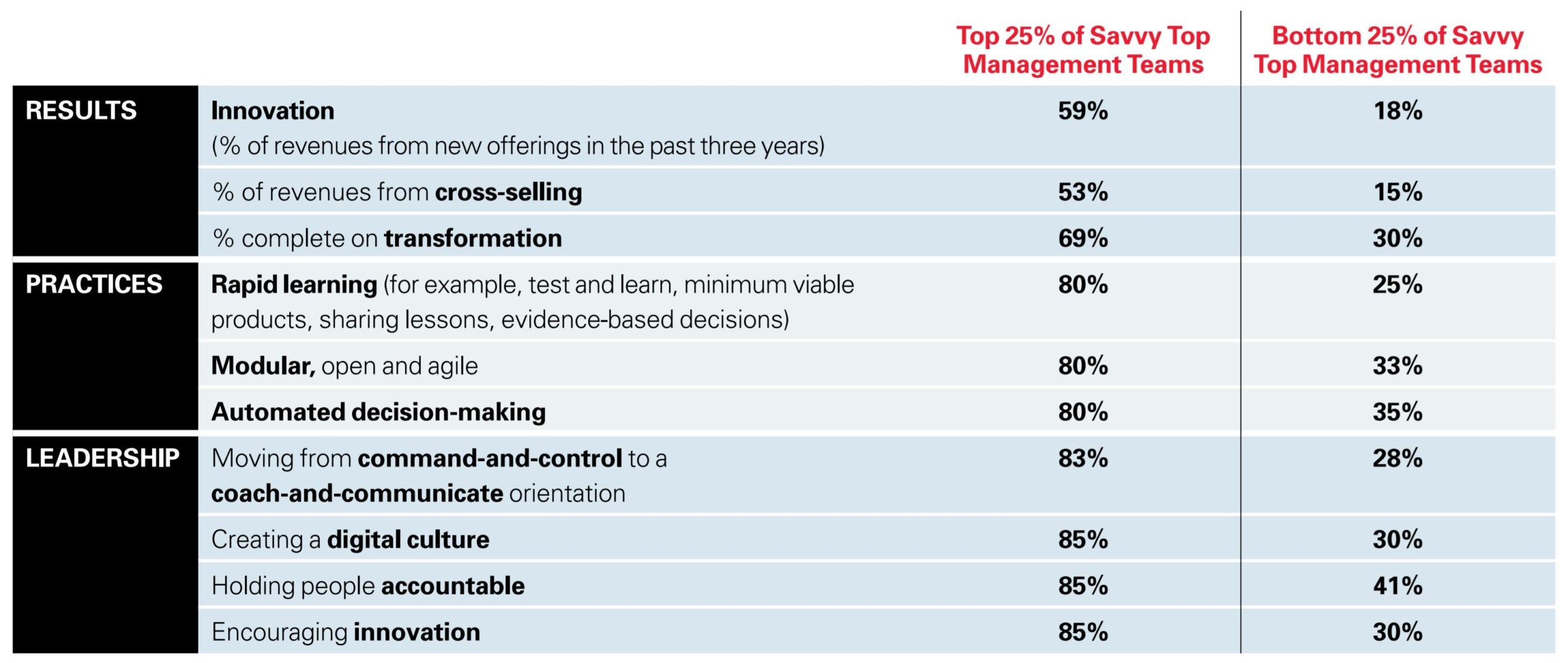Does Your C-Suite Have Enough Digital Smarts?
Morgan Blackett - Marketing Strategist
25 Nov 2022
We live in an increasingly digital age. Organizations across all industries understand the importance of digital technologies in their firm’s operations. However, what is often understated is the role of leadership in organizations to guide and manage organizations through digital transformation phases.
Digital Transformation Roles
In a previous blog I wrote on digital maturity, I highlighted a digital maturity matrix. The matrix had two dimensions, digital intensity and transformation management intensity. Transformation management intensity is about leadership capabilities that are needed to drive digital transformation in the organization. Digital was once thought of to be a concern of particular roles in an organization, such as the CTO or CIO, but with every business becoming a digital business, every executive will need to have an understanding of digital transformation. To be capable of high transformation management, your organization’s top leadership team will need to be digitally savvy.
Digital savviness is an understanding developed through education and experience, of the impact that emerging technologies will have on a business’ success over the next decade. A digitally savvy, top leadership team is a team in which more than half of the executive members are digitally savvy (Weill et al., 2021).
The Need for Digitally Savvy Teams
A study in 2019 showed that only 24% of boards were digitally savvy. Additionally, only 7% of companies were found to have digitally savvy executive teams. The average top management team has nine members. Overall, only 17% of individual team members are digitally savvy (Weill et al., 2021). The implications of this means that the demand for digital savviness has not been matched by the supply. Even though we are in a digital age, many organizations are not well equipped to navigate through this time. Organizations that can have digitally savvy teams within, or working closely with, their organizations, will achieve a competitive advantage.
Research shows that digitally savvy executive teams outperformed companies without such teams by more than 48%, based on revenue growth and evaluations. They also have 15% higher net margins. It is important to note that, companies do not have to reach the 50% threshold of executive teams who are digitally savvy to start seeing results. There are incremental benefits to committing to improving your digital smarts. It was found that as the percentage of digital savviness on top teams increases, so does net margin and revenue growth. For every 10% increase in top team digital savviness, there is a 0.4 percentage point (pp) increase in profitability and a 0.7 pp increase in revenue growth, compared with the industry average (Weill et al., 2021).
How Digitally Savvy Top Teams Drive Performance
The most digitally savvy top teams are far more likely to produce results through innovation and empowered workforces than the least savvy teams. They achieve this through:
- Innovation: Digitally savvy top teams are attaining breakthrough performance via innovation, cross-selling, and business transformation. For example, the companies in the top quartile generate an impressive 59% of revenue from innovations introduced within three years, compared with only 18% in the bottom quartile of companies (Weill et al., 2021). In a digital world, innovation and business transformation aimed at meeting more of their customer’s needs and earning a larger share of the customer’s wallets are early indicators of better financial performance
- Rapid learning: It was also found that digitally savvy top teams achieve their industry-leading results in part by creating rapid learning cultures that are typified by test-and-learn experimentation, minimum viable product releases, and evidence-based decision-making.
- Leadership: Digitally savvy top teams lead differently than less savvy top teams, too. They have moved away from the command-and-control leadership model to a coach-and-communicate approach. They support this change with the widespread use of evidence-based decision-making. Rather than relying on instinct or what has worked in the past, digitally savvy top teams develop hypotheses and test them, looking for early measures of success that are correlated with financial performance. This allows executives to identify and solve problems sooner.

Developing a Digitally Savvy Team
Bolstering the digital savviness of senior leaders represents a valuable upskilling opportunity for most companies and a high-return investment in the increasingly digital future. We suggest that companies pursuing this opportunity consider the following recommendations:
- Determine the current level of digital savviness on the top team – requires an honest conversation between CEO, HR head and CIO/CTO
- Strengthen the key members first – those key members typically are the CEO, CFO and CMO.
- Expand the effort – once an increase in digital savviness has been made by key members, expand.
- Pursue the 10 performance differentiators – as top teams become more digitally savvy, they can focus their attention on the factors that distinguish the high-performing companies such as those mentioned in the image above.
Invest in Your Digital Smarts
Digitally savviness is an in-demand skill that is often rare to find. Your organization can take steps to increase their digital smarts by investing in training from experts. As we have established, digital savviness is not exclusive to a particular role. Organizations stand to benefit when at least half of their team has the experience and education necessary to lead them into the future. Our “Composable Coaching” practice is a tailor-made program for your organization that can give you a competitive advantage.
Reference
Weill, P., Woerner, S. L., & Shah, A. (2021, March 3). Does your C-suite have enough digital smarts? O'Reilly Online Learning. Retrieved November 28, 2022, from https://learning.oreilly.com/library/view/does-your-c-suite/53863MIT62320/chapter001.xhtml#h1-1




Share on social media